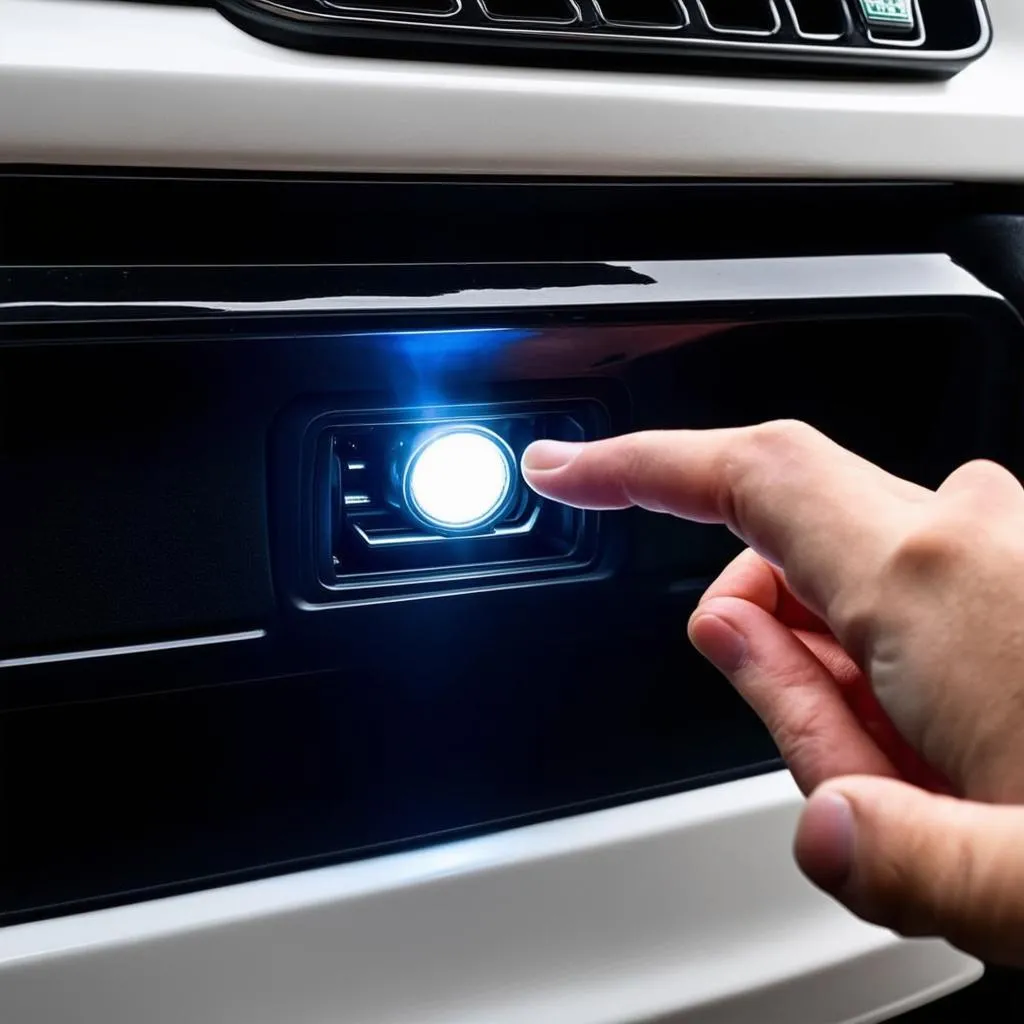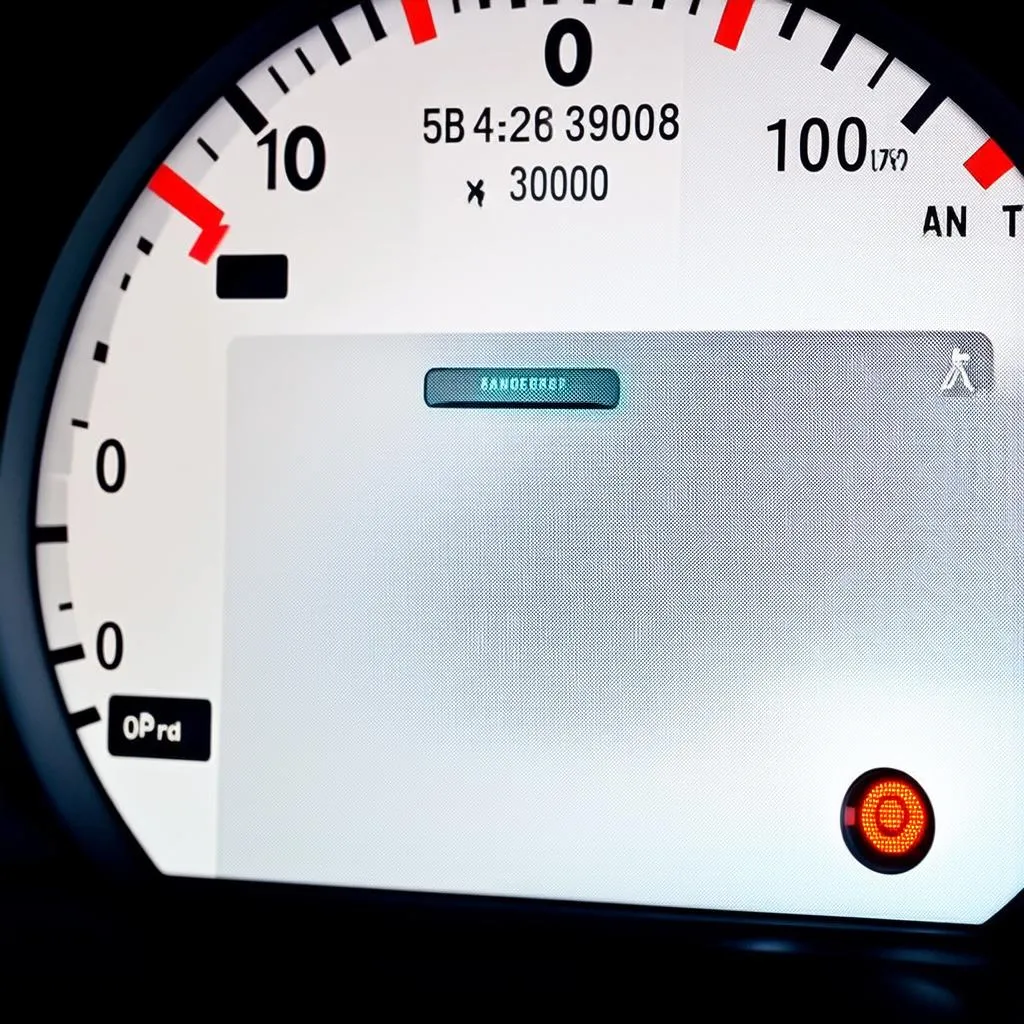Have you ever been driving your Range Rover and suddenly a warning light pops up on your dashboard? Your heart probably skipped a beat, right? Fear not, because the OBD port is your gateway to understanding and potentially fixing the issue. It’s like the Rosetta Stone for your car, speaking the language of mechanics and helping you decipher what’s going on under the hood.
Understanding the Importance of Your Range Rover Obd Port Location
In the world of automotive repair, the OBD port, or On-Board Diagnostics port, is your best friend. This little port, often tucked away under the dashboard, provides a wealth of information about your Range Rover’s health. But finding it can sometimes feel like a treasure hunt.
Why is Finding the OBD Port So Important?
-
Diagnostics: Think of the OBD port as your car’s “black box.” When a warning light illuminates, connecting a diagnostic tool to this port reveals the specific trouble codes triggering the issue. This saves you time and money by avoiding unnecessary guesswork.
-
Maintenance: Regularly accessing your OBD port allows you to monitor your Range Rover’s vital systems, track fuel efficiency, and even reset maintenance reminders. It empowers you to stay proactive about your car’s health.
-
Customization: Beyond diagnostics, the OBD port opens up a world of customization for your Range Rover. Want to tweak performance settings or add aftermarket accessories? The OBD port is your access point.
 Range Rover OBD Port
Range Rover OBD Port
Locating the OBD Port in Your Range Rover
While the exact location might vary slightly depending on the model year, the OBD port in most Range Rovers is generally found:
- Under the dashboard, on the driver’s side: Look for a small, trapezoidal-shaped port, usually covered by a plastic flap.
- Inside the center console: In some models, you might find it tucked inside the center console storage compartment.
Pro Tip: If you’re having trouble finding the OBD port, refer to your Range Rover’s owner’s manual for a precise location.
Common Issues and Solutions
Can’t connect to the OBD port: Ensure the ignition is turned to the “on” position. If that doesn’t work, check your OBD connector for bent or damaged pins.
Error codes after connecting: Jot down the codes and consult a mechanic specializing in European vehicles or use an online OBD code reader to understand their meaning.
Remember: While some OBD-related tasks are DIY-friendly, always consult a qualified mechanic for complex repairs or if you’re unsure about anything.
 Range Rover Dashboard Warning Light
Range Rover Dashboard Warning Light
Beyond the Technical: The OBD Port and Feng Shui
Interestingly, the concept of the OBD port resonates with principles of Feng Shui. Just as Feng Shui emphasizes the flow of energy (chi) in a space, the OBD port facilitates the flow of information within your Range Rover. Keeping this energy pathway clear and accessible ensures your vehicle’s well-being.
Questions You Might Have
- Are all OBD ports the same? Most modern cars use a standardized OBD-II port, but older models might have different connectors.
- Can I install an aftermarket device using the OBD port? Yes, many devices like GPS trackers, performance monitors, and even insurance dongles can be connected.
Need Help with Your Range Rover?
Finding your OBD port is just the first step. For expert assistance with diagnostics, repairs, or installations, don’t hesitate to reach out. Our team of specialized technicians is available 24/7 to keep your Range Rover running smoothly. Contact us on Whatsapp at +84767531508.
Discover More:
- Learn about L322 Range Rover Obd Port Location
- Troubleshooting a 2002 Range Rover OBD-II Port
- Finding Your 2002 Range Rover HSE OBD Location
We’re here to help you navigate the world of Range Rover maintenance with confidence. Happy driving!